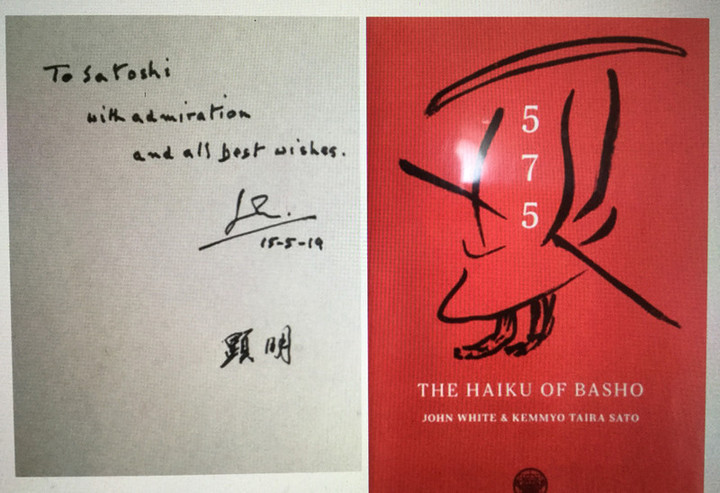Inspired by the book titled “575 The Haiku of Basho”, I will translate 300 HAIKUs of Bashō under the pen-name of L. P. Lovee.
In the introduction of the book, Mr. John White (Ex-professor of UCL) mentioned as follows:
“In all the translations that follow in this particular selection of Basho’s haiku, the 5-7-5 format is strictly adhered to, and whenever Basho does see fit to add or subtract a sound unit or two in a given line, the syllabic structure of the resulting English haiku meticulously follows the same pattern.”
Although I appreciate the efforts of Mr. White, I am afraid that such efforts are not always successful for representing Basho’s haiku.
The reason is because all of Japanese words can be expressed with letters "kana" ("ひらかな” or "カタカナ") each of which has a vowel, whereas all of English words consist of letters having a vowel or a consonant. Moreover, among Japanese words, there are many homonyms, differences of which can be expresed with "kanji", that is, "漢字”.
For example, you will find interesting aspects of such differences by reading "Farewell haiku of Ransetsu" (http://knt73.blog.enjoy.jp/blog/farewell-haiku-of-ransetsu.html)
or "Let's enjoy haiku" (http://knt73.blog.enjoy.jp/blog/2018/06/lets-enjoy-haiku.html).
Thus, in most cases, the Japanese 5-7-5 norm is not equivalent to the English norm of 5-7-5 syllables. If you adhere to the 5-7-5 syllable, the English haiku tends to lack brevity and “kire” (i.e., pause or discontinuation), which are essential factors in Japanese haiku. A haiku having a "kire" allows its reader to have an instant imagination for what will follow the kire, or what is unsaid in the haiku.
There are many English translations made by non-Japanese speakers, some of them are well done, but the language barriers prevent them from representing fascinating aspects of Bashō's haiku. In this site, I will attempt to break such language barriers as a native Japanese speaker.
For the convenience of readers to evaluate, I will describe my translations of Bashō's haiku by putting the reference number of each corresponding haiku of "575 The Haiku of Bashō" as follows.
(1/300)
ほろほろと山吹ちるか瀧の音
(horohoroto yamabuki-chiru-ka taki-no-oto)
shall yellow rose petals
flutter down?
the thunder of water fall
(2/300)
霧しぐれ富士を見ぬ日ぞ面白き
(kiri-shigure fuji-o-minuhi-zo omoshiroki)
showery mists
hiding Mt. Fuji today_
amusing!
(3/300)
山路来て何やらゆかしすみれ草
(yamaji-kite naniyara-yukashi sumiregusa)
coming through a mountain path,
somehow graceful_
violets
(4/300)
永き日を囀りたらぬ雲雀かな
(nagaki-hi-o saezuri-taranu hibari-kana)
the so-called long-day
insufficient to fully sing_
skylarks
(5/300)
菜畠に花見顔なる雀哉
(nabatake-ni hanamigao-naru suzumekana)
a plot of rape field,
with a look of flower viewing
a sparrow
(6/300)
岩躑躅染る泪やほととぎ朱
(iwatsutsuji somuru namida-ya hototogisu)
the rock azalea
dyed with the tears of
a cuckoo
(7/300)
春なれや名もなき山の朝がすみ
(harunare-ya namonaki-yama-no asagasumi)
the spring, now_
on the unnamed mountain
morning mists
(8/300)
むめがかにのっと日の出る山路かな
(mumegaka-ni notto-hinoderu yamaji-kana)
amid the scent of plum blossoms
suddenly emerges the sun_
this mountain path
(9/300)
五月雨にかくれぬものや瀬田の橋
(samidare-ni kakurenumono-ya seta-no-hashi)
in the rain of rainy season
what remains in sight_
(10/300)
風吹けば尾ぼそうなるや犬桜
(kaze-fukeba obosou-naru-ya inuzakura)
when the wind blows,
their tails dwindle_
dog-cherry trees
この「俳句HAIKU」をタップすると最新の全ての記事を一覧できます。
